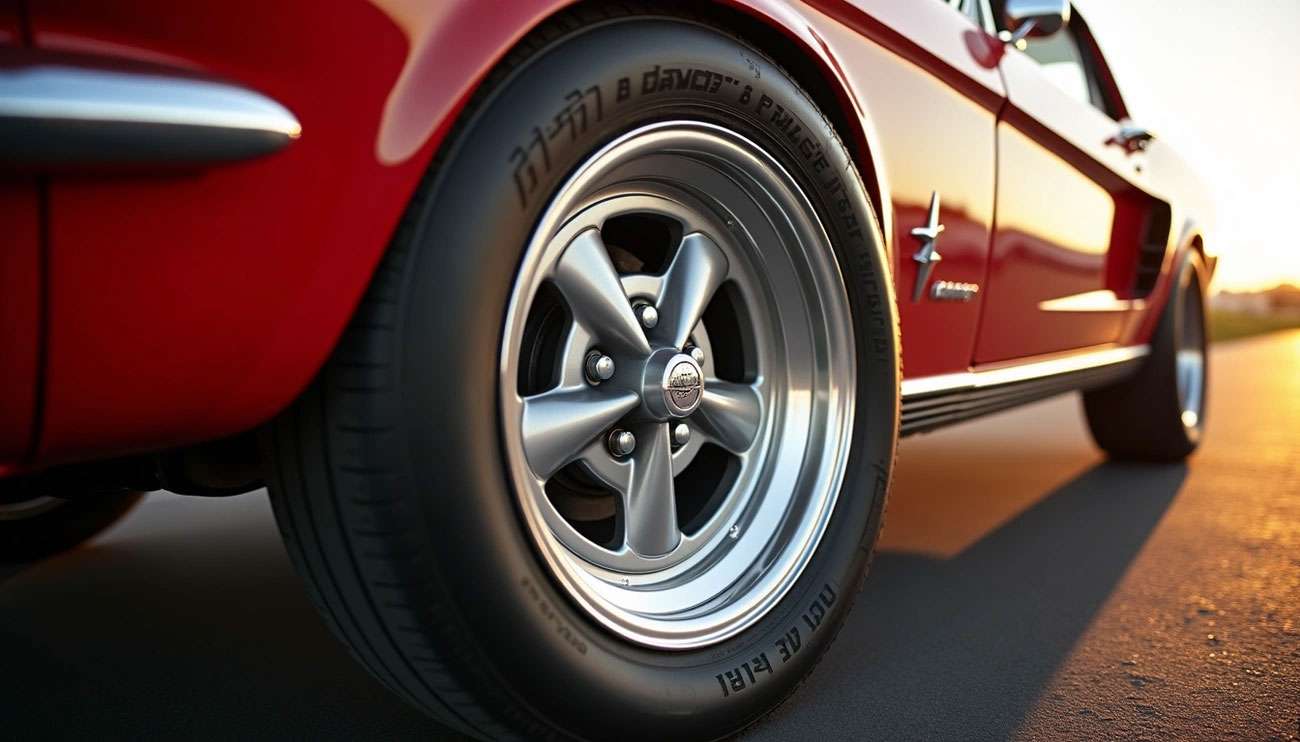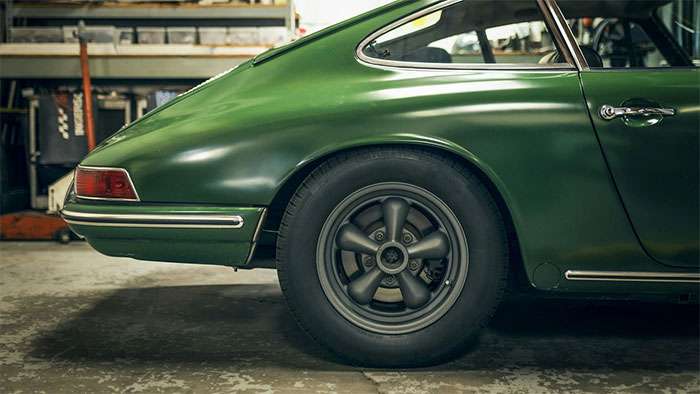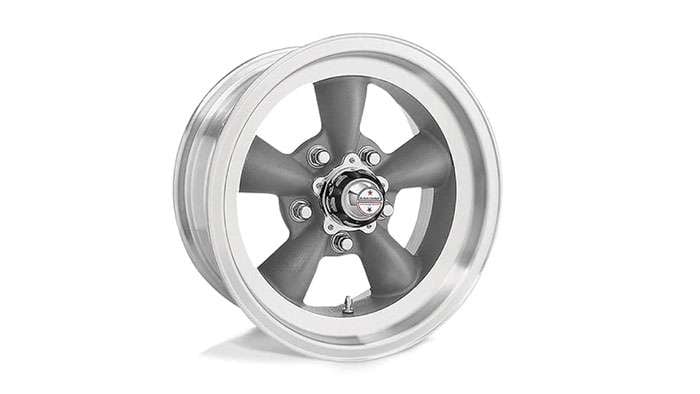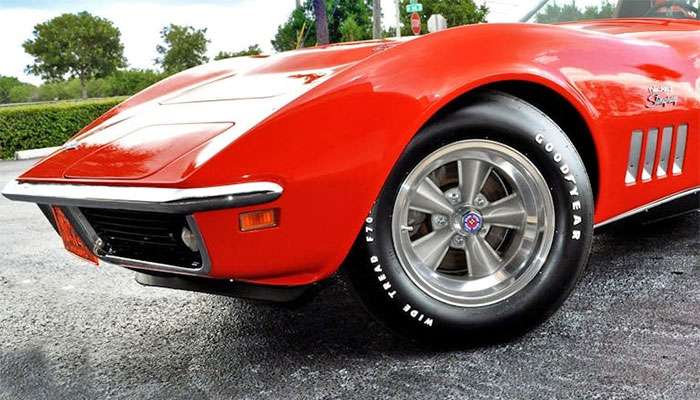
The american racing wheel company stands as America's most influential aftermarket wheel manufacturer. Romeo Palamides and Jim Ellison founded this legendary company in San Francisco in 1956, creating what would become the longest continuously operating wheel company in the United States. Their small operation focused on lightweight wheels for drag racing, but their innovative magnesium casting techniques produced wheels that were significantly lighter and often stronger than anything serious drag racers had used before.
American Racing changed everything when they released their first street-targeted wheel in 1963 – the now-legendary Torq-Thrust. This iconic design became the foundation of muscle car culture. The wheel's distinctive five-spoke design with tapered spokes proved so popular that it remains one of the most sought-after wheel designs today. The company continued this innovative approach with the Torq-Thrust D in 1965, specifically engineered to provide the clearance Corvette brake calipers required. These classic american racing wheels have become the gold standard in automotive culture, representing the most successful aftermarket wheel design in history.
The muscle car explosion of the early 1960s created an entirely new market – custom wheels designed specifically for these powerful machines. While countless designs have appeared and disappeared over the decades, the original american mag wheels from American Racing remain the enduring symbol of an era when vehicle customization first captured mainstream America. At Performance Plus Tire, we carry the complete selection of American Racing wheels that continue this legendary tradition.

Image Source: Hemmings
The mid-1950s drag racing scene demanded innovation. Romeo Palamides, already building custom race cars, recognized that performance advantages came from every component – not just the engine. His vision extended beyond frames to include wheels that could deliver serious weight savings.
Palamides understood that lightweight components made the difference between winning and losing on the drag strip. Around 1954, he connected with San Francisco machine shop owner J.O. "Jim" Ellison. Together with engineering innovator Tom Griffith, they tackled a critical racing challenge: creating wheels that delivered extraordinary lightness while maintaining the strength drag racing demanded.
Their collaboration produced purpose-built magnesium wheels with an unprecedented strength-to-weight ratio. While they initially focused on building superior dragsters, their revolutionary wheels quickly captured industry attention. The american racing wheel company incorporated officially in 1956, establishing what would become America's longest continuously operating aftermarket wheel manufacturer.
Before formalizing the business, Palamides sold magnesium wheels to fellow drag racers under the Palamides Automotive name. These early offerings were straightforward – simple slotted designs that prioritized function over appearance.
The company's breakthrough moment came in November 1956 when Hot Rod Magazine featured their dragster with innovative mag wheels on the cover. This exposure created an immediate surge in orders that transformed their part-time operation into a thriving business.
The product line expanded to serve every drag racing application. Wide rear wheels accommodated the increasingly capable traction tires that serious racers needed, while narrow, ultra-lightweight spindle-mount wheels reduced front-end weight. These products remained exclusively for competitive use – street applications weren't part of their strategy yet.
By the early 1960s, advertisements for American Racing's distinctive five-spoke magnesium wheels appeared regularly in automotive publications. The foundation was set for one of the most influential aftermarket companies in automotive history.

Image Source: Hagerty
Steel and aluminum dominated wheel construction until American Racing made a decision that changed everything. The american racing wheel company chose magnesium for their wheels when most competitors stuck with traditional materials.
Drag racers used heavy steel wheels because they were strong and readily available. Magnesium offered something different – it's the lightest structural metal you can use for wheel construction. The weight difference is significant: magnesium is 33% lighter than aluminum and 75% lighter than steel. This weight reduction directly addresses one of racing's biggest challenges: reducing unsprung weight to improve vehicle performance.
American Racing's timing was perfect. The company became known for performance by offering cutting-edge magnesium aftermarket wheels during America's early racing boom. These american mag wheels gave racers a real advantage without sacrificing the strength they needed for competition.
The strength-to-weight ratio of magnesium makes it ideal for racing wheels. A magnesium wheel can be designed much lighter than aluminum wheels while maintaining comparable strength. This translates to better handling, faster acceleration, and improved braking – critical advantages when you're racing.
Magnesium wheels also handle heat better than other materials. They help dissipate heat from the brakes, reducing the risk of brake failure from overheating. The vibration damping capacity of magnesium exceeds aluminum by more than 50 times. This reduces vibration throughout the vehicle, particularly in the engine, suspension, and transmission components.
Early american mag wheels had problems that needed solving. Magnesium wheels were prone to corrosion, which would gradually damage their surfaces. The industry developed better chemical treatments over time to address this issue.
Flammability was another concern since magnesium is highly combustible in powder form. This turned out to be mostly a misconception for wheels. As one industry expert explained, "trying to ignite a mag wheel is nothing like lighting a piece of paper on fire". Modern manufacturing processes have essentially eliminated this risk through specialized heating and forming techniques.
Understanding these materials is important when choosing wheels for your vehicle. At Performance Plus Tire, we can help you select the right american racing wheels that provide the performance benefits you're looking for.

Image Source: Amazon.com
The Torq-Thrust wheel arrived in 1963 and became the crown jewel of the american racing wheel company's lineup. Hot Rod Magazine later named it "one of the top 20 speed parts that changed the world", recognizing its impact on automotive history.
American Racing designed the original Torq-Thrust specifically for drag racing applications. The wheel featured five tapered spokes that flared dramatically where they met the rim. This wasn't just about looks—the parabolic contour spokes reduced weight while improving airflow for better brake cooling. These classic american racing wheels quickly made the jump from racetracks to street applications, gaining fame in iconic films like Bullitt.
When disk brakes became popular, American Racing faced a fitment challenge. Their solution? The Torq-Thrust D—where "D" stood for disk brakes. The D variant featured curved spokes specifically designed to clear Corvette brake calipers without requiring spacers. After years away from catalogs, the traditional Torq-Thrust D made its triumphant return in the mid-1990s.
American Racing introduced the Torq-Thrust II around 1967 with innovative two-piece construction—a cast aluminum center welded to a forged aluminum outer barrel. This design allowed custom widths and backspacings, making it perfect for modified vehicles. A more affordable one-piece version arrived in 2009 for budget-conscious enthusiasts.
The Torq-Thrust Original (TTO), introduced in 2004, returned to the straight-spoke design that made these american mag wheels famous. With recessed washers and larger center caps, these wheels maintained authentic vintage looks while fitting modern vehicles. Ready to experience this legendary design? Performance Plus Tire offers a complete selection of American Racing wheels to help you find the perfect match for your ride.

Image Source: Hagerty
The Torq-Thrust wheel achieved something few automotive parts ever accomplish – it became a cultural icon that extends far beyond the automotive world. This distinctive design has woven itself into America's cultural fabric.
The Torq-Thrust's simple five-spoke design captured the imagination of car enthusiasts everywhere. Hot Rod Magazine recognized this impact by naming it "one of the top 20 speed parts that changed the world". The wheel's five round spokes that flare dramatically as they meet the rim proved as timeless and universally appealing as classic American designs like Converse Chuck Taylors. This wasn't just another aftermarket part – it became the definitive symbol of American muscle car culture.
Hollywood cemented the american racing wheel company's place in popular culture. These classic american racing wheels starred on Steve McQueen's Highland Green Mustang in Bullitt (1968), rolled under the General Lee in Dukes of Hazzard, and powered the hero car in Two-Lane Blacktop. Each appearance reinforced the wheels as the ultimate symbol of American automotive rebellion and style.
The Torq-Thrust became the most copied wheel design in automotive history. Everyone wanted to capture its magic – from Ansen to Appliance, Fenton to Astro. Even J.C. Penney jumped in with their "El Tigre" version. The influence spread internationally when Japanese manufacturer Work created their VS-KF wheels, heavily inspired by the original design and now highly prized among drift enthusiasts.
Where are american racing wheels made varies by construction type. Cast aluminum wheels come from China, while two-piece cast wheels are assembled in the USA from imported centers. The premium forged lineup remains 100% American-made. Manufacturing facilities operate in Southern California, South Carolina for forged wheels, and Alabama for cast aluminum production.
Who owns american racing wheels today reflects the industry's evolution. Romeo Palamides' original company was acquired by Platinum Equity in 2005. Wheel Pros purchased American Racing in 2008 and operates under the Wheel Pros name domestically while maintaining the American Racing brand internationally. For enthusiasts seeking authentic old american racing wheels or modern versions, Performance Plus Tire offers a complete selection.
American Racing Wheel Company created something truly special when Romeo Palamides and Jim Ellison started their San Francisco operation in 1956. What began as a solution for drag racers became the foundation of modern wheel customization. Their magnesium wheels didn't just reduce weight – they changed how enthusiasts thought about vehicle personalization.
The Torq-Thrust wheel stands as American Racing's greatest achievement. Hot Rod Magazine called it one of the "top 20 speed parts that changed the world," and that recognition still holds true today. From Steve McQueen's Mustang in Bullitt to countless street machines across America, this five-spoke design became the universal symbol of automotive style.
American Racing's influence reaches far beyond their own products. Manufacturers worldwide have tried to copy the Torq-Thrust design, but none have matched its lasting appeal. The company proved their adaptability by creating variants like the Torq-Thrust D for disc brake applications and the two-piece Torq-Thrust II for custom builds.
Today's American Racing reflects the changing face of manufacturing. Production spans facilities across the United States and overseas, with ownership under the Wheel Pros umbrella. The core commitment to innovation and performance remains unchanged.
These wheels represent more than automotive components – they embody the American spirit of customization and performance. Whether you're restoring a classic muscle car or building a modern street machine, American Racing wheels connect you to decades of automotive passion. At Performance Plus Tire, we carry the complete selection of American Racing wheels that continue this legendary tradition.
The company's lasting impact proves a simple truth: great design never goes out of style. American Racing didn't just make wheels – they created automotive icons that defined an entire era of car culture.
American Racing Wheel Company's journey from a 1956 San Francisco drag racing startup to a global automotive icon reveals how innovation and timing can reshape entire industries.
• American Racing revolutionized wheel design by pioneering magnesium construction, creating wheels 75% lighter than steel while maintaining superior strength for racing performance.
• The 1963 Torq-Thrust wheel became the most imitated design in automotive history, earning recognition as one of the "top 20 speed parts that changed the world."
• Cultural impact extended beyond racing through iconic film appearances in Bullitt, Dukes of Hazzard, and Two-Lane Blacktop, cementing the wheels as symbols of American muscle car culture.
• The company's adaptability drove continuous innovation, from the original Torq-Thrust to the disk brake-compatible Torq-Thrust D and modern two-piece construction variants.
• American Racing's influence spawned countless imitators worldwide, yet the original five-spoke design remains timelessly popular across generations of automotive enthusiasts.
The Torq-Thrust's enduring appeal demonstrates how functional design, when executed perfectly, can transcend its original purpose to become a lasting cultural symbol that connects decades of automotive passion.
American Racing wheels are known for their pioneering use of magnesium in wheel construction, which offered a superior strength-to-weight ratio compared to traditional steel wheels. Their iconic Torq-Thrust design, introduced in 1963, became a symbol of muscle car culture and remains popular today.
The Torq-Thrust wheel's distinctive five-spoke design became synonymous with muscle car esthetics. It appeared in iconic films like Bullitt and was named one of the "top 20 speed parts that changed the world" by Hot Rod Magazine, cementing its status as a cultural icon beyond just automotive circles.
While some American Racing wheels are manufactured overseas, the company maintains production facilities in the United States. Their fully forged lineup is 100% American-made, with manufacturing locations in Southern California, South Carolina, and Alabama.
Magnesium wheels offered a dramatic weight reduction compared to steel, being 75% lighter. This decreased unsprung weight, improving vehicle performance in acceleration, handling, and braking. Magnesium wheels also provided superior heat dissipation and vibration damping properties.
American Racing has continually evolved its designs to meet changing automotive needs. For example, they introduced the Torq-Thrust D to accommodate disk brakes, developed the two-piece Torq-Thrust II for custom widths, and later created the TTO (Torq-Thrust Original) to offer vintage styling for modern vehicles.